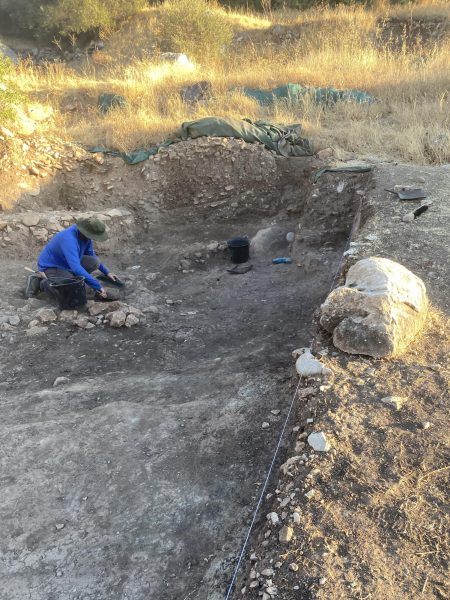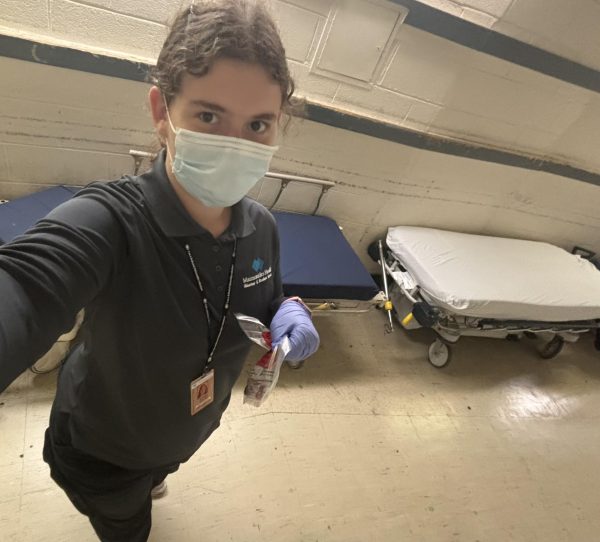Q&A: Getting to Know Dr. Natalya Sukhonos
This year, Freshman students are lucky to have Dr. Sukhonos, a graduate of Harvard and Stanford, as their new first and second-year Spanish teacher. Dr. Sukhonos is ready to bring the best of her academic and teaching skills to the Ramaz Upper School. Sharing many of Ramaz’s values, such as friendliness and attention to each individual student, Dr. Sukhonos anticipates a great year filled with newly developed relationships and learning skills.
Rebecca Silber: Where did you work before you came to the Ramaz Upper School?
Dr. Natalya Sukhonos: Stanford, Harvard, Berkley Carroll, Idea, and the Ramaz Middle School.
RS: What made you choose to come to the Ramaz Upper School?
NS: I worked at the Ramaz Middle School last year, and thought it would be fun to see how my students are doing in Upper School. Also, I’ve always wanted to work at an independent high school because it focuses on each individual student. At Ramaz, the small classroom sizes allow for each student’s educational needs to be met.
RS: What do you enjoy about Ramaz so far? What do you dislike? Why?
NS: I enjoy the spirit of collegiality among the faculty along with the students’ friendliness and eagerness to learn. Also, the people here are very willing to help out. On the other hand, what I don’t love about Ramaz so far are the short periods. In college, the periods are much longer, which allows you to go into depth when teaching. Unfortunately, due to the short periods, that opportunity is not given to me here at Ramaz.
RS: Describe a few differences between working at Ramaz and your previous school.
NS: One major difference is the location. I really like working on the Upper East Side because it is a great opportunity to experience the true excitement of the city. I also like the flexibility of the schedule. Ramaz allows me to live the best of both worlds by both doing what I love and spending quality time with my family. In the other schools where I’ve taught, I would sometimes be required to teach the entire day
RS: Why did you choose to teach Spanish for a living?
NS: Spanish is the second most prevalent language in the United States. I think that the ability to speak and understand the language will help the students with their intellectual development and future success. In addition, the border crisis is currently a huge topic in the country. I think it is important to have students learn Spanish so that they can sympathize a bit more with the immigrants.
RS: Do you tend to incorporate the border crisis in your curriculum?
NS: I would like to, however, I cannot because the students learning first year spanish don’t have a good enough vocabulary to talk about such a controversial and detailed topic.
RS: What are the most enjoyable and challenging parts of being a high school Spanish teacher?
NS: The most challenging part of being a high school Spanish teacher is getting my students interested in understanding the language; to have them think of language as ”the live iridescence of words.” I try to have my students talk a lot in class in order to help them reach that point in their studies. The most enjoyable part of being a high school Spanish teacher is seeing my students communicate with one another, and be actively involved in conversations.
RS: What are your core values as a teacher? Do your values complement the school’s?
NS My values involve inclusivity, attention to every student, and having a good give-and-take relationship in which I try and give my best to my students, yet expect the same passion from them. I feel that the school most definitely shares these values. Everyone expresses themselves to me with friendliness, and is always offering a helping hand.
RS: Do you consider yourself to be a teacher who gives a lot of work? How much school and homework do you feel is necessary to give in order to teach your students as much as possible?
NS: When learning another language, you need to cement your knowledge of specific grammar, structures, and vocabulary, with sometimes tedious exercises. I try to give my students one or two of these exercises a week, which in my opinion, is not a lot. As the classes become more complex, I tend to give my students larger amounts of more difficult work. But overall, I believe in giving enough work so that my students can fully understand the material.
RS: To wrap everything up, briefly describe your experience at Ramaz so far, and what you anticipate for the rest of the year.
NS: It has been really nice to see my previous Middle School students rise to become freshmen who are enthusiastic and interested. It is equally as nice to teach freshmen Spanish for the first time. I anticipate having a nice rest of the year, as students develop more skills, become better communicators, and ask more questions.


